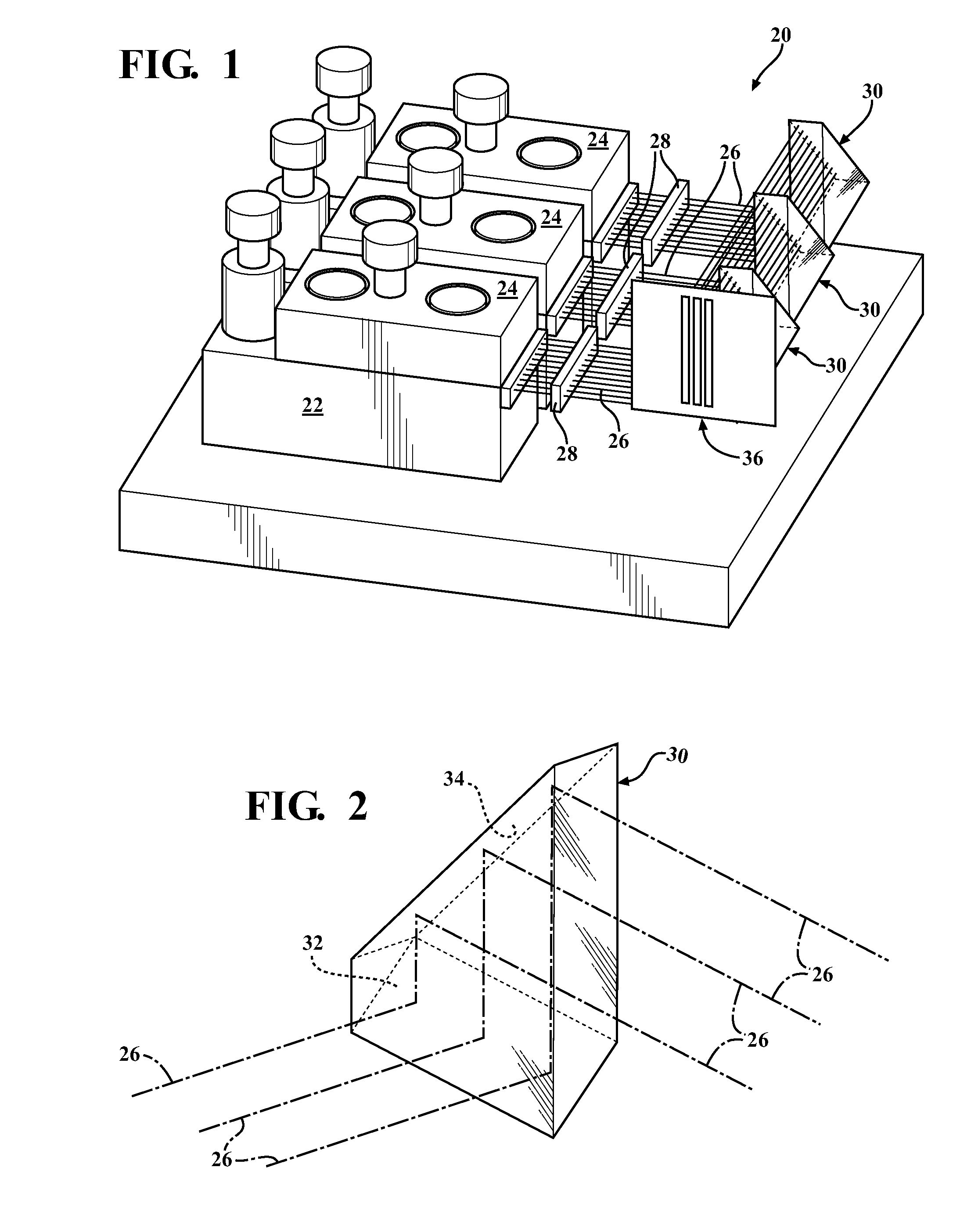Spatially Combined Laser Assembly And Method Of Combining Laser Beams
- Summary
- Abstract
- Description
- Claims
- Application Information
AI Technical Summary
Benefits of technology
Problems solved by technology
Method used
Image
Examples
Embodiment Construction
[0024]Referring to the Figures, wherein like numerals indicate corresponding parts throughout the several views, a diode laser assembly 20 constructed according to one aspect of the present invention is generally shown in FIG. 1. The diode laser assembly 20 includes a generally flat base plate 22 having a plurality of mounting surfaces for supporting a plurality of diode bars 24, each of which includes a plurality of diode laser emitters arranged in a one-dimensional array. Alternately, the diode laser emitters could be mounted on the base plate 22 without the diode bars 24, if desired. As shown, all of the diode bars 24 are disposed in the same vertical plane, and each is oriented to emit a laser beam 26 in a first, or lateral, direction.
[0025]In addition to supporting the diode bars 24, the flat base plate 22 functions as a heat sink, which can be liquid or convectively cooled, to convey heat away from the diode bars 24. The base plate 22 is of one piece of material and has a gene...
PUM
 Login to View More
Login to View More Abstract
Description
Claims
Application Information
 Login to View More
Login to View More - R&D Engineer
- R&D Manager
- IP Professional
- Industry Leading Data Capabilities
- Powerful AI technology
- Patent DNA Extraction
Browse by: Latest US Patents, China's latest patents, Technical Efficacy Thesaurus, Application Domain, Technology Topic, Popular Technical Reports.
© 2024 PatSnap. All rights reserved.Legal|Privacy policy|Modern Slavery Act Transparency Statement|Sitemap|About US| Contact US: help@patsnap.com










